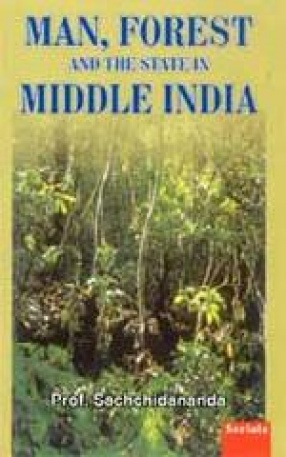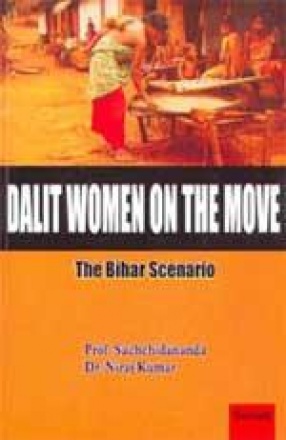A large section of the Indian population in middle India extending from Gujarat to West Bengal live in and around forests. People were used to living in peace interacting with the environment without creating any problems. From the mid 19th century, the State became another stakeholder in the forest. From time to time policies were made and legislation enacted to regulate the relationship between the local inhabitants, the forest and the government. The bulk of the population involved comprise the Scheduled Tribes and some other backward castes who depended largely on the forest for their subsistence. 74 Scheduled Tribes in the country identified as ‘Primitive Tribal Groups’ totally depend on the forest for survival. They are usually small groups in pre-agricultural economy and are facing acute problems of survival. Some tribes in the area subsist as artisans. Three lakh families eke out a subsistence by working in wood, bamboo and grass craft and manufacture of Katha by using the axe to cut the shape wood, bamboo and cane. Even the agricultural tribes depend for many of their life needs on the forest. Since most of the tribals have traditionally depended on forest for their livelihood their entire social and cultural life revolves around the forest. They regarded themselves as lords of the forest. But on account of Forest legislation such as the Wild Life Protection Act and the Forest Conservation Act and reservation of forests, they have been reduced to the status of concession holders. Any breach of the forest legislation lands them in jail. The forest, therefore has become the biggest irritant in the relationship between the tribals and the State. This study was conducted in the States of Jharkhand, Orissa and Madhya Pradesh (including Chattisgarh). It seeks to highlight forest as a source of livelihood for the tribals, the role of nontimber of forest produce in tribal economy, the relationship between tribal culture and heritage with the forest. Community participation through Social Forestry and Joint Forest Management and the shortcomings of planning in this regard have also been brought out. The important role played by women in this sector has been highlighted. Towards the end of the book a vision for the future in regard to the interface between people, forest and the government has been conceived. This would naturally involve a reorientation of forest policy and management and more importantly a change in the mindset of Forest officials at different levels so that the interest of the local inhabitants are not sacrificed the dominant national interest. There is need to provide opportunity for a search for community solutions, more involvement of NGOs and promotion of a bigger role of women in forest management. The best strategy is to plan upwards from community level based on local knowledge and institutions and sharing decision making power with the local communities.
Man, Forest and The State in Middle India
$28.80
$32.00
In stock
Free & Quick Delivery Worldwide
All orders amounting to US$ 50 or more qualify for Free Delivery Worldwide. For orders less than US$ 50, we offer Standard Delivery at $14 per book.
ABOUT THE AUTHOR Sachchidananda
Prof. Sachchidananda, D. Lit., is one of the seniormost Anthropologists in India. He received his education from Patna University, and School of Oriental and African Studies, University of London. He has taught at Patna University and New York University. He has held several important posts like Director, Bihar Tribal Welfare Research Institute, Ranchi; Director, A.N. Sinha Institute of Social Studies, Patna; and Vice-Chancellor, Ranchi University, Ranchi. Prof. Sachchidananda has contributed a large number of papers and book reviews to research journals in India and abroad, and published a number of books in Sociology and Anthropology. Important amontst which are : Culture Change in Tribal Bihar (1964), The Tribal Village in Bihar (1968), Social Dimension of Agricultural Development (1972), Tribal Voter in Bihar (1979), Elite and Development (1980), Industrialisation and Social Disorganisation (1985), Tradition and Development (1988), Shifting Cultivation in India (1989). A past President of the Anthropology Section of Indian Science Congress, Prof. Sachchindananda is the recipient of the R.P. Chandela Medal for distinguished work in Anthropology in 1982. He is associated with a number of social science research institutions in the country in an advisory capacity.
reviews
0 in total
Review by Anonymous
Be the first to review “Man, Forest and The State in Middle India” Cancel reply
You must be logged in to post a review.
Bibliographic information
Title
Man, Forest and The State in Middle India
Author
Edition
1st ed.
Publisher
ISBN
8186771379
Length
viii+267p., Tables; Bibliography; 23cm.
Subjects
more by Sachchidananda see more
similar bookssee more
Romance and Pleasure: Understanding the Sexual Conduct of Young People in Dhaka in the Era of HIV and AIDS
Romance and Pleasure ...
$18.00
$20.00
From Seva To Cyberspace: The Many Faces of Volunteering in India
From Seva to Cyberspace ...
$36.90
$41.00








There are no reviews yet.